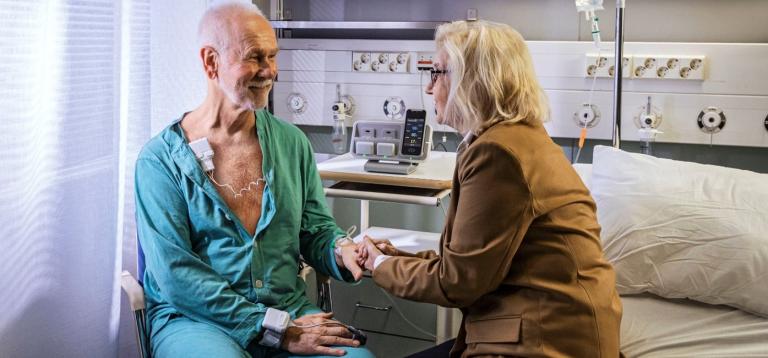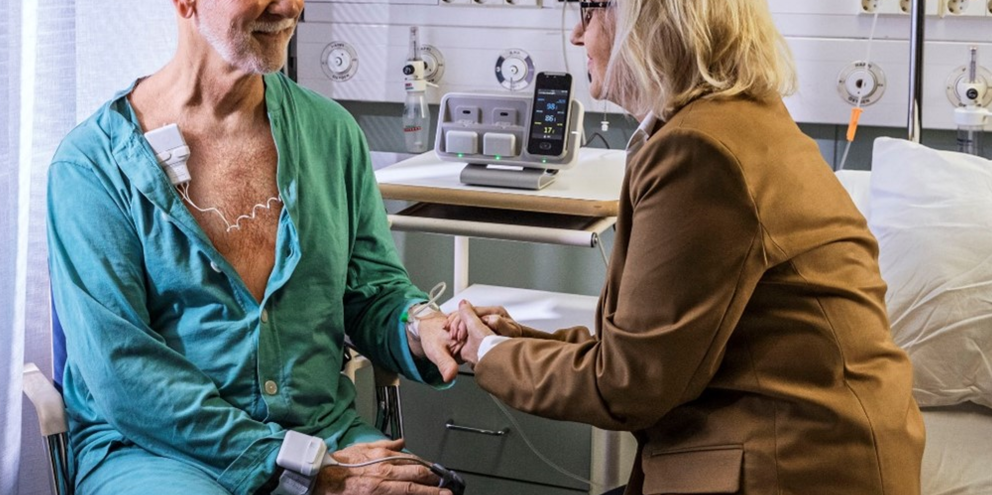
According to the World Health Organization, “Older age is also characterized by the emergence of several complex health states that tend to occur only later in life and that do not fall into discrete disease categories.”1
When several pathologies are present comorbid conditions may increase the overall risk for complications.2 The impact of increasing patient complexity is not limited to clinical outcomes. Patients in Canada with two or more chronic conditions are responsible for almost half of direct and nearly two-thirds of indirect medical care expenditures.3 The high costs associated with increased patient complexity stem from longer hospital stays, poor compliance with treatment plans, more frequent medical visits, and an increase in the number of medical providers involved in caring for a single patient.4-7
It is clear that suffering from multiple chronic medical problems leads to high utilization outside of the hospital but a growing body of evidence also suggest that people with chronic disease are more likely to be hospitalized.8 The sheer numbers of patients presenting to hospitals has lead to an expansion of short stay observation visits in an effort to alleviate the cost and burden of overwhelming admission rates.8 With increasingly sicker observation patients, true inpatients represent the most complex and challenging individuals in the hospital.8 Increasing complexity combined with a high ward census puts patients at risk.
Nurses are on the front lines not only taking care of more complex patients but more of them at a time. Nursing shortages translate to less time spent with each patient, which not only impacts nursing job satisfaction and morale but also creates dangerous gaps in monitoring the increasingly complex patients admitted to the hospital wards.9-11 In their study looking at nurse staffing levels, Dr. Peter Buerhaus et al. found that three-quarters of nurses considered the nursing shortage a major problem for the quality of patient care and a serious impediment to the time nurses could spend with patients.11 Almost all nurses surveyed believed that poor nursing staff levels led to decreased patient quality of care and nursing satisfaction which in turn led to more and more nurses leaving the profession.11
With fewer nurses and more complex patients it will become impossible to adequately monitor inpatients and provide the safety they deserve at a cost that is palatable to hospitals and health systems. These facts make the development of new technologies capable of filling in the gaps and continuously monitoring patients for deterioration absolutely essential. Nurses simply do not have enough time to spend monitoring patients and are able to spend only a fraction of their shift at the bedside.9 Bates and Zimlichman called finding patients before they rapidly deteriorate and suffer a major adverse event, “the next major opportunity to improve patient safety.”12
Dr. Frederic Michard believes that continuously monitoring inpatients is essential and should not increase workload but redistribute it so that deterioration in complex patients may be distilled into an early warning score that can be immediately relayed to the appropriate clinician in an effort to prevent a failed rescue.9 In order to accomplish this and provide a safety net for ward patients, a continuous monitoring solution is necessary. GE HealthCare has accepted the challenge with the Portrait™ Mobile continuous monitoring platform. Portrait Mobile is capable of relaying large amounts of data from small, wearable sensors on mobile patients to edge computing systems with advanced software designed to measure RR, SpO2 and PR and provide trends and alerts that may help nurses to detect the first sign of deterioration. Patient complexity does not have to mean patient compromise, high costs, and poor outcomes.
References:
- World Health Organization Fact Sheet on Ageing and Health. WHO, 2018. https://www.who.int/news-room/fact-sheets/detail/ageing-and-health. Last accessed 12/09/2019.
- Examining different measures of multimorbidity, using a large prospective cross-sectional study in Australian general practice. BMJ Open, https://bmjopen.bmj.com/content/4/7/e004694. Last accessed 12/09/2019.
- Patient Complexity Characteristics in the Hospital Setting, AJMC, 2018. https://www.ajmc.com/journals/ajac/2018/2018-vol6-n3/patient-complexity-characteristics-in-the-hospital-setting?p=1. Last accessed 12/09/2019.
- Defining patient complexity from the primary care physician’s perspective: a cohort study. Ann Intern Med, 2011. https://annals.org/aim/article-abstract/1033218/defining-patient-complexity-from-primary-care-physician-s-perspective-cohort. Last accessed 12/09/2019.
- Paying a premium: how patient complexity affects costs and profit margins. Ann Surg. https://www.ncbi.nlm.nih.gov/pmc/articles/PMC1420827/. Last accessed 12/09/2019.
- Patient complexity and risk factor control among multimorbid patients with type 2 diabetes: results from the R2D2C2 study. Med Care, https://www.ncbi.nlm.nih.gov/pmc/articles/PMC3552007/. Last accessed 12/09/2019.
- Managing patients with multimorbidity in primary care. BMJ, https://www.bmj.com/content/350/bmj.h176.long. Last accessed 12/09/2019.
- Are Medicare Patients Getting Sicker?,American Hospital Association, 2012. https://www.aha.org/guidesreports/2012-12-11-are-medicare-patients-getting-sicker. Last accessed 12/09/2019.
- Protecting ward patients. ICU Mgmt & Pract. https://healthmanagement.org/c/icu/issuearticle/protecting-ward-patients. Last accessed 12/09/2019.
- Continuous monitoring in an inpatient medical-surgical unit: a controlled clinical trial. Am J Med 2014. https://www.amjmed.com/article/S0002-9343(13)01072-3/fulltext. Last accessed 12/09/2019.
- Is the shortage of hospital registered nurses getting better or worse? Findings from two recent national surveys of RNs. Nurs Econ, 2005. https://www.researchgate.net/profile/Karen_Donelan/publication/7860597_Is_the_Shortage_of_Hospital_Registered_Nurses_Getting_Better_or_Worse_Findings_from_Two_Recent_National_Surveys_of_RNs/links/5711063108ae846f4ef05cb5/Is-the-Shortage-of-Hospital-Registered-Nurses-Getting-Better-or-Worse-Findings-from-Two-Recent-National-Surveys-of-RNs.pdf. Last accessed 12/09/2019.
- Finding patients before they crash: the next major opportunity to improve patient safety. BMJ Qual Saf, 2015. https://qualitysafety.bmj.com/content/24/1/1. Last accessed 12/09/2019.
Not all products or features are available in all markets
JB15888XX 3/2023








